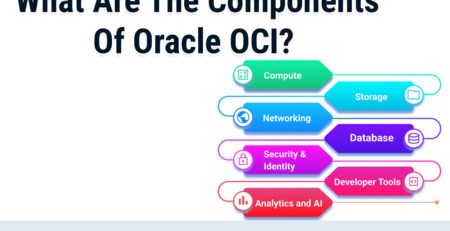Google AI Mode SEO: The Complete Guide to Optimizing for Google’s Latest AI Search Feature
The digital marketing landscape experienced a seismic shift with Google’s introduction of AI Mode, fundamentally transforming how search engines deliver information to users. Unlike traditional search results or even AI Overviews (AIOs), Google AI Mode represents a paradigm shift toward conversational, context-aware search experiences that prioritize comprehensive, multi-source responses over simple link listings.
Recent groundbreaking research by Yevheniia Khromova of SE Ranking provides the first comprehensive analysis of Google AI Mode’s behavior, examining over 10,000 queries to understand how this revolutionary search feature operates. This extensive study reveals critical insights that every SEO professional must understand to succeed in the evolving search landscape.
Understanding Google AI Mode: Beyond Traditional SEO
Google AI Mode differs significantly from conventional search results and even AI Overviews. While traditional search presents a ranked list of web pages and AIOs provide summarized information with limited citations, AI Mode creates comprehensive, conversational responses that incorporate multiple sources seamlessly. This fundamental difference requires a complete rethinking of SEO strategies and content optimization approaches.
The Reciprocal Rank Fusion (RRF) models powering AI Mode evaluate content based on relevance, authority, and contextual appropriateness rather than traditional ranking signals alone. This shift means that optimizing for AI Mode requires understanding how artificial intelligence systems assess and prioritize information from various sources to create coherent, helpful responses.
The Citation Revolution: 12 Links Per Response
Perhaps the most striking finding from the SE Ranking study is that Google AI Mode responses contain an average of 12 links, with some responses featuring over 30 citations. This represents a dramatic departure from traditional search results, where users typically focus on the top three to five organic results.
For SEO professionals, this citation-heavy approach presents both opportunities and challenges. The increased number of citations means more websites have the potential to gain visibility within AI Mode responses. However, the competition for these citation slots is intense, requiring content that demonstrates exceptional expertise, authoritativeness, and trustworthiness.
The high citation count also indicates that AI Mode prioritizes comprehensive coverage of topics, drawing from multiple perspectives and sources to provide users with well-rounded information. This suggests that content creators should focus on developing thorough, expert-level content that can serve as authoritative sources within their respective domains.
The Disconnect: AI Overviews vs. AI Mode Performance
One of the most surprising discoveries from the research is the minimal overlap between AI Overviews and AI Mode results. With only 10.7% URL-level overlap and 16% domain-level overlap, success in AI Overviews does not guarantee inclusion in AI Mode responses.
This finding challenges the assumption that optimization strategies effective for AI Overviews would automatically translate to AI Mode success. The different algorithms, ranking factors, and user intent patterns between these systems require distinct optimization approaches.
The low overlap suggests that AI Mode evaluates content using different criteria than AI Overviews. While AIOs might prioritize concise, factual information suitable for quick summaries, AI Mode appears to value comprehensive, detailed content that can support in-depth conversational responses.
Domain Authority in the AI Era: Top Performers Analysis
The study’s analysis of top-performing domains in AI Mode reveals fascinating insights about which types of websites succeed in this new search environment. The leading domains include:
- Indeed (1.8%) – representing job search and career information
- Wikipedia (1.6%) – demonstrating the continued value of comprehensive, well-sourced reference content
- Reddit (1.5%) – highlighting the importance of community-driven, authentic user discussions
- YouTube (1.4%) – showing multimedia content’s relevance in AI responses
- NerdWallet (1.2%) – exemplifying specialized, expert financial guidance
These top performers share common characteristics that provide valuable insights for AI Mode optimization. They offer authoritative, comprehensive content within their respective niches, maintain high user engagement levels, and provide information that directly addresses user queries with expert-level depth.
The diversity of top-performing domains also indicates that AI Mode doesn’t favor any single content type or industry. Instead, it prioritizes quality, relevance, and authority across various sectors, creating opportunities for specialized websites to gain visibility alongside major platforms.
The Google Business Profile Phenomenon
Perhaps the most unexpected finding is that 98% of Google links in AI Mode responses reference Google Business Profiles rather than company websites. This statistic reveals a fundamental shift in how AI systems perceive and reference business information.
This trend has profound implications for local SEO and business optimization strategies. Companies must ensure their Google Business Profiles are comprehensive, accurate, and optimized for AI Mode inclusion. This includes maintaining up-to-date business information, encouraging customer reviews, posting regular updates, and ensuring consistency across all online business listings.
The preference for Google Business Profiles also suggests that AI Mode prioritizes verified, structured business information over traditional website content when referencing companies. This emphasizes the importance of local SEO and Google My Business optimization as integral components of AI Mode strategy.
Volatility and Consistency Challenges
The study reveals an alarming level of volatility in AI Mode results, with only 9.2% overlap when the same query is performed multiple times. This extreme variability presents significant challenges for SEO professionals attempting to track performance and optimize for consistent visibility.
The high volatility suggests that AI Mode responses are highly dynamic, potentially incorporating real-time information, trending topics, and contextual factors that change rapidly. This dynamic nature requires SEO strategies that focus on broad topical authority rather than specific keyword targeting.
To address this volatility, content creators should develop comprehensive topic clusters that cover subjects from multiple angles and perspectives. By creating extensive, interconnected content networks, websites can increase their chances of inclusion regardless of which specific aspects AI Mode chooses to emphasize in any given response.
Optimizing Content for RRF Models and AI Citations
Reciprocal Rank Fusion models evaluate content differently than traditional search algorithms. These systems consider factors such as content comprehensiveness, source credibility, information accuracy, and contextual relevance when determining which sources to cite in AI responses.
To optimize for RRF models, content creators should focus on developing authoritative, well-researched pieces that demonstrate clear expertise in their subject areas. This includes incorporating relevant statistics, citing credible sources, providing comprehensive coverage of topics, and maintaining high editorial standards.
Content structure also plays a crucial role in AI Mode optimization. Information should be organized logically, with clear headings, subheadings, and bullet points that make it easy for AI systems to extract and reference specific information. Schema markup and structured data can further enhance content’s visibility to AI algorithms.
Geographic and Local Optimization Strategies
The prominence of Google Business Profiles in AI Mode responses highlights the critical importance of geographic optimization (GEO) strategies. Local businesses must ensure their online presence is optimized for AI Mode inclusion through comprehensive local SEO practices.
This includes optimizing Google Business Profiles with complete business information, high-quality images, regular posts, and customer reviews. Local content creation should focus on addressing community-specific needs and questions that AI Mode might reference when providing location-based responses.
Geographic optimization also extends to creating location-specific content that addresses regional variations in products, services, or information needs. This localized approach can help businesses gain inclusion in AI Mode responses for geographically relevant queries.
Answer Engine Optimization (AEO) in the AI Mode Era
Traditional Answer Engine Optimization focuses on providing direct, concise answers to specific questions. However, AI Mode’s conversational nature requires an evolved approach to AEO that emphasizes comprehensive, context-rich responses.
Content optimized for AI Mode should anticipate follow-up questions and provide thorough coverage of topics that allows AI systems to extract relevant information for various query contexts. This requires understanding user intent patterns and developing content that addresses both primary questions and related subtopics.
The key to effective AEO in the AI Mode era is creating content that serves as a comprehensive resource for entire topic areas rather than focusing on individual keywords or questions. This holistic approach increases the likelihood of inclusion across various AI Mode responses within a subject domain.
Future-Proofing SEO Strategies for AI Evolution
As AI search technology continues evolving, SEO strategies must adapt to remain effective. The volatility observed in AI Mode responses suggests that the system is still developing and refining its algorithms, meaning optimization approaches must remain flexible and adaptive.
Future-proofing requires focusing on fundamental content quality principles that transcend specific algorithmic preferences. This includes developing expertise, building authority, maintaining trustworthiness, and creating user-focused content that provides genuine value regardless of how search technology evolves.
Organizations should also invest in comprehensive content strategies that cover topic areas thoroughly rather than targeting specific keywords or queries. This broad approach provides resilience against algorithmic changes and increases the likelihood of maintaining visibility as AI search technology advances.
Conclusion: Embracing the AI Mode Optimization Challenge
Google AI Mode represents a fundamental shift in search technology that requires entirely new optimization approaches. The SE Ranking study provides crucial insights into how this system operates, revealing both opportunities and challenges for SEO professionals.
Success in AI Mode requires understanding citation patterns, optimizing for RRF models, maintaining comprehensive Google Business Profiles, and developing content strategies that prioritize expertise and authority over traditional SEO metrics. The high volatility and low overlap with existing AI systems mean that AI Mode optimization requires dedicated strategies distinct from traditional SEO and AIO optimization.
As Google continues refining AI Mode and similar systems, the insights from this pioneering research provide a foundation for developing effective optimization strategies. By focusing on comprehensive content creation, authoritative sourcing, and user-focused information delivery, websites can position themselves for success in the evolving AI-powered search landscape.
The future of SEO lies in understanding and adapting to AI systems that prioritize quality, comprehensiveness, and user value over traditional ranking signals. Organizations that embrace this shift and develop AI Mode optimization strategies based on data-driven insights will be best positioned to maintain and grow their search visibility in the artificial intelligence era.












